revolutions of 1848
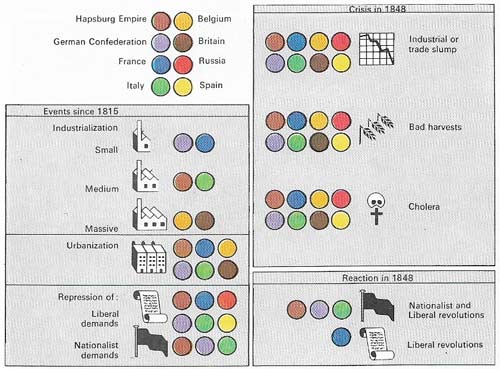
Figure 1. Uprisings occurred in most European countries in 1848, with similar causes but varying in intensity and effect. In Russia and Spain, political dissent lacked the concentrated support of the factory or city, while Belgium and Britain had already made political concessions in the face of heavy industrialisation and urbanisation, avoiding the violent confrontations of 1848.
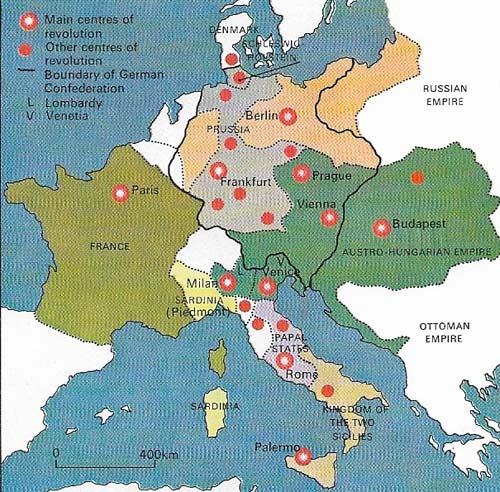
Figure 2. The revolutions of 1848 were urban; the peasants were apathetic or conservative. Political ideas spread quickly along the new railways, attracting city intellectuals, workers and businesses.
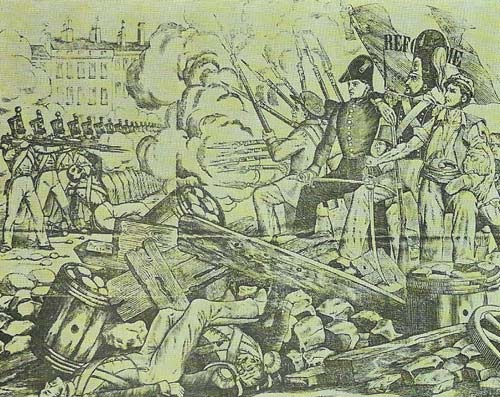
Figure 3. Paris barricades in March 1848 were manned by middle-class liberals, working-class socialists, and the unemployed. Shattered by his unpopularity, Louis-Philippe abdicated within a few days.
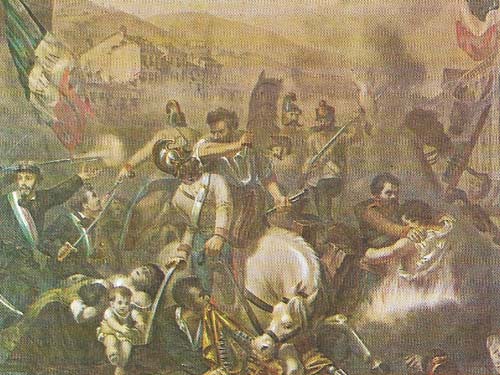
Figure 4. Italian revolts for state constitutions, for republics in Rome and Venice and for a north Italian kingdom all collapsed by 1849.
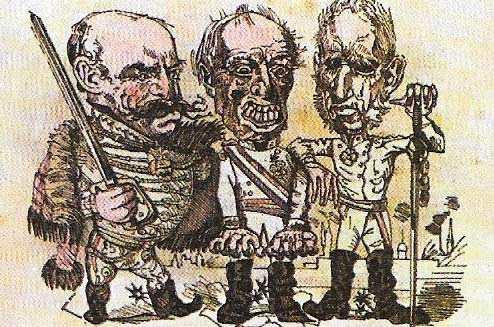
Figure 5. Military saviors of the Hapsburgs (caricatured left to right) were Jellacic (1801–59), who led Croats against Magyars in independent Hungary, Radetzky (1766–1858), who successfully ended the Italian revolts, and Windischgratz (1787–1862), who subdued Vienna and Bohemia.
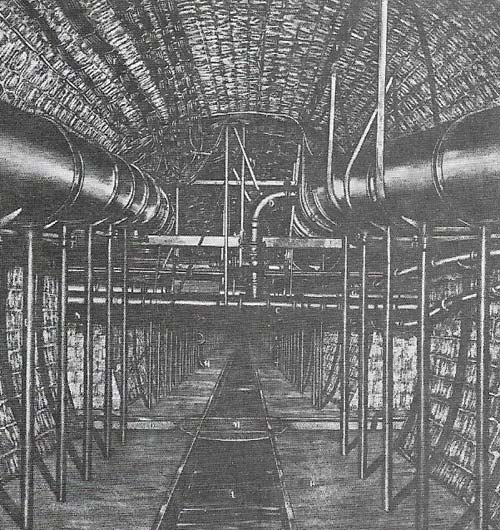
Figure 6. The Paris sewers begun by Baron Haussmann (1801–1891) during the 1850s were a response to criticism of governmental failure to stop cholera spreading in 1848, when fear of the disease acted as a catalyst in the revolutions. Haussmann also created wide boulevards to facilitate cavalry charges against future revolutionary barricades.
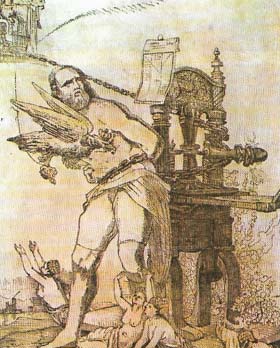
Figure 7. Karl Marx (1818–1883), shown as Prometheus chained to his printing press, and Friedrich Engels (1820–1895) published the Communist Manifesto early in 1848 as a doctrine and strategy for the Communist League. Although this made no contribution to the outbreaks of 1848, fear of socialism inhibited the revolution.
In an age of revolution 1848 was the year of revolution. The governments of France, Italy, and central Europe were all shaken by insurrection. Contrary to the belief of contemporaries, there was no overall plan, however, and lack of coordination was fatal for the revolutionaries.
Political reform through revolt
The roots of the risings throughout Western Europe were remarkably similar. The Industrial Revolution had unprooted traditional patterns of life and had created a new urban proletariat and a much enlarged bourgeoisie intent upon political power. Economic and social unrest was aggravated by the autocratic rule that was a legacy of the Vienna Settlement of 1815 and which provided a focus for the intellectuals who were agitating for political reform. People were hungry as a result of crop failures in 1845, 1846, and 1847 when bad corn harvests coincided with potato blight. Famine drove desperate mobs onto the streets prepared to demand any changes that offered hope.
Significantly, the centers of unrest were the great cities (Fig 2). Many areas of Europe had recently experienced the Industrial Revolution and thousands had flocked to the cities only to live in squalor and work in conditions of frightening degradation. These people were hit by the second crisis of 1848 – an international credit collapse, which led to wholesale bankruptcies and unemployment. The unemployed joined the hungry on the streets. Finally, there was a psychological catalyst. The epidemic of revolution was accompanied by an epidemic of cholera, which spread panic and anger (Figure 6).
Wave of early successes
The first revolts erupted in Italy (Figure 4). Once Louis-Philippe (1773–1850) had abdicated from the French throne in February (Figure 3) revolution took hold. In March the resignation of the apostle of European stability, Prince Metternich (1773–1859), Chancellor of the Hapsburg Empire, boosted the morale of the revolutionaries. Caught by surprise and overwhelmed by the extent of the outbreak, governments could not call on each other for help. Their only hope seemed to be to make concessions. Liberal constitutions – (Figure 1) were granted everywhere and the Hapsburg emperor, the pope and the kings of France and Prussia fled from their capitals.
Simultaneously with the liberal revolts came an upsurge of nationalism. The Hapsburg Empire with its spheres of influence in Italy and Germany seemed doomed. Hungary declared her independence, the Bohemians formed a nationalist movement and a Slav Congress met to consider a new deal for Slavs in the empire. In Italy, Giuseppe Mazzini (1805–1872) called for a rising to form a new Italian state. At the same time King Charles Albert of Piedmont (1798–1849) sent an army to help the Lombards drive out the Austrians, hoping to form a north Italian kingdom. In the German Confederation an assembly met at Frankfurt to decide on a policy to unite Germany. These political moves showed the degree of hostility to the Vienna Settlement of 1815 and its legacy of repression.
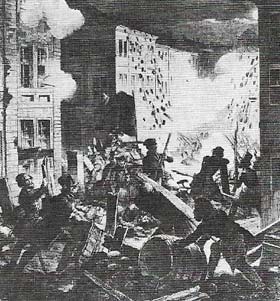 |
| Liberal revolts in the 39 German states won constitutions that did not survive the repression of 1848. The impotence of nationalists in the Frankfurt Assembly was shown when they called Austrian and Prussian troops in to keep order. |
In spite of all this, by the middle of 1848 the tide of revolution was stemmed. Early successes proved illusory. The Hapsburg Empire followed its historic policy – divide and rule – by exploiting deep divisions between the revolutionaries. Croats and Romanians who resented Magyar domination rose against Hungary's new leader, Louis Kossuth (1802–1894). Their armies helped to do the Hapsburgs' work for them. In Italy, Charles Albert's forces were smashed by the Austrian army in two campaigns. Traditional loyalty to existing separate states deprived him of wide Italian support. Catholics hesitated to disobey the pope, who had forbidden violence against the Catholic Hapsburgs.
In Germany, at the Frankfurt Assembly, the intellectuals wrangled interminably and failed to decide on a form for the new Germany until it was too late. Everywhere the middle classes, who had provided the impetus and leadership for the revolution, were horrified by the forces they had unleashed (Figure 7). Having seen revolution degenerate into anarchy, they welcomed the restoration of law and order. By 1849 all was quiet again. The forces of reaction seemed triumphant. Disorganized mobs stood no chance against the professional armies (Figure 5) of Austria, Prussia, Russia and France. The Hapsburg tradition of garrisoning each province with troops from other provinces had prevented any chance of soldiers siding with the revolution. In every area there was little hope of successful revolution since most of the population – the peasants – rejected it.
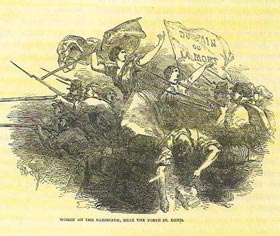 |
| Women on the barricades; the tricolour, symbolising hopes of liberty, equality and fraternity; the red flag of socialist revolution; the flags of German, Italian, Hungarian or Bohemian nationalism – all these made a heroic display in 1848. But heroic slogans such as "Bread or Death" did not march an army. |
The legacy of 1848
There were a few significant gains, however. Serfdom was abolished in the Hapsburg Empire. Piedmont and Prussia kept their constitutions and eventually led Italy and Germany to unity in 1871. Governments learned to pay more attention to the material interests of their subjects and to pay lip service at least to more democratic processes. But nationalists had learned that idealism and popular enthusiasm would not be enough. Their hopes would be fulfilled only if they could match their opponents' military strength. The revolutions of 1848 were followed by a period of cynicism and opportunism in politics and a use of armed force to settle grievances. Bismarck's age of "blood and iron" had begun.
